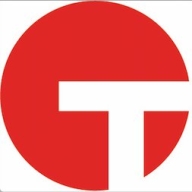

Zenoss Cloud and Tanium are prominent IT operations management solutions. Zenoss Cloud is often favored for its pricing and customer service, while Tanium excels in endpoint management and security capabilities, giving it an edge in comprehensive security features.
Features: Zenoss Cloud effectively monitors and analyzes cloud environments. Tanium offers comprehensive endpoint management, extensive security capabilities, and robust functionalities.
Room for Improvement: Zenoss Cloud needs more intuitive navigation, improved scalability, and enhancements in user interface. Tanium has system complexity, a steep learning curve, and requires simplifying its features for better usability.
Ease of Deployment and Customer Service: Zenoss Cloud is simpler to deploy with commendable customer service. Tanium's deployment is challenging, and its customer service receives mixed reviews.
Pricing and ROI: Zenoss Cloud is noted for competitive pricing and positive ROI. Tanium requires a higher upfront investment, but its powerful features can justify the expense for comprehensive security management.
| Product | Market Share (%) |
|---|---|
| Tanium | 5.7% |
| Zenoss Cloud | 1.2% |
| Other | 93.1% |


| Company Size | Count |
|---|---|
| Small Business | 4 |
| Midsize Enterprise | 3 |
| Large Enterprise | 10 |
| Company Size | Count |
|---|---|
| Small Business | 4 |
| Large Enterprise | 5 |
Tanium Endpoint Platform reduces security risk, improves agility & increases efficiency, a fundamentally new approach to endpoint security's threat detection, indicent response, vulnerability assessment and configuration compliance & with management's software distribution, asset utilization, asset inventory and patch management.
We monitor all Server Monitoring reviews to prevent fraudulent reviews and keep review quality high. We do not post reviews by company employees or direct competitors. We validate each review for authenticity via cross-reference with LinkedIn, and personal follow-up with the reviewer when necessary.